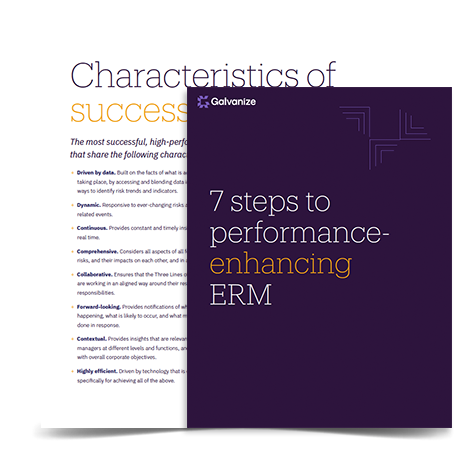Business digitalization is critical to remain competitive, but there are inherent risks in transforming your business.
Evolve or go extinct
Digitalization is a fairly recent business buzzword promoted by analysts like Gartner. It basically refers to the process of moving from a traditional business model to a digital one. At its core, digitalization involves the use of “digital” technologies to transform a business model, which—if done for the first time—would certainly disrupt the market. (Think about companies like Uber, Skype, and Airbnb.)
This kind of disruption usually means that those who are slower to evolve end up closing their doors, while others race or struggle to adapt. When new companies come in (or old ones evolve) and disrupt an industry, keeping up is literally a matter of life or death.
As a result of digitalization, many brick and mortar businesses have closed down (remember Blockbuster?), while others are forced to digitalize just to survive. In the case of video rentals, new players like Netflix came on the scene, captured market share, and quickly established themselves.
So how do organizations stay agile in the era of advanced technologies like cloud computing, AI, and block chain that make digitalization faster, more accessible, and more aggressive? And how do they deal with the associated risks that these changes and new technologies bring?
“87% of companies believe that digital transformation is a competitive opportunity, while a further third say it’s a matter of survival.” —Capgemini
Disruptors & new risks are appearing in more industries
There’s only a handful of brave disruptors who initiate digitalization within their industry. More often than not, the real transformation happens when organizations are forced to digitalize as a reaction to those brave disruptors who changed the landscape—not following suit would mean being driven out of the market.
We’re seeing this in industries like banking, retail, and in corporate offices around the world.
-
Virtual banking
Digital-only banks like Revolut, Monzo, and Starling, with no brick and mortar presence, are springing up and changing banking as we know it. Consumers no longer need to leave their homes to open a bank account, cash a cheque, pay bills, or get a loan or mortgage—it’s all done through their mobile devices. The promise of convenience, ease of use, and low cost means that money is becoming more digital than ever before. And the amount of digital financial transactions has not stopped growing. According to Payments Cards & Mobile, 15 years ago, more than half of all banking transactions occurred within the branch network; today that number is less than 10%.
Risks: This transformation has opened banks up to a new and growing set of risks like data privacy or breaches, cyber crime, third-party risk, and the need to keep pace with new technology and platforms.
-
Cloud-based warehouses
Online retailers no longer stock goods in warehouses. “Drop shipping” or third-party shipments have become commonplace. You now shop from home and the products are delivered by a company that doesn’t produce or stock them. It’s the age of the marketplace platform and the aggregator. It’s also the “logistics” age.
Risks: Vendor risk is increasing as companies add more steps in their supply chain. It’s becoming more and more difficult to stay on top of every step, every vendor, and every regulation.
-
Digital products & delivery
Companies are converting an ever-growing list of products to digital form and delivering them online (e.g., books and movies). Blockbuster is a prime example of a company who didn’t adapt to this digital transformation. In the early 2000s, Netflix CEO and co-founder, Reed Hastings, came to Blockbuster with an offer: purchase the then DVD-by-mail rental company for $50 million. Blockbuster declined. In 2010, Blockbuster filed for bankruptcy, having plummeted from a value-high of $5 billion to just $24 million. Netflix’s value at the time was $13 billion. An unwillingness to digitalize cost Blockbuster its empire.
Risks: Avoiding risk is a risk in and of itself. Organizations need to strategize for the future. They need to take a calculated approach to new technology and trends, and not actively avoid change.
-
Remote workforces
Communication platforms like Webex, GoToMeeting, and Zoom have “digitalized” meetings, reducing the need to physically be in the office. In turn, this has cut down on travel and has increased the trend of the remote workforce. In fact, remote work has grown 91% over the last 10 years. This disruption has resulted in more productivity from workers, increased employee retention, fewer sick days, and reduced costs for both the employer and the employee.
Risks: Many remote workers find it difficult to “un-plug” in their off hours, they often feel lonely, and can find it more difficult to communicate and collaborate with co-workers. This can lead to increased staff turn-over and harm the company culture.
“The benefits of digitalization are huge, but so are the risks. … even a small lapse in security could result in huge losses and business collapse.”

Business digitalization will come with new and emerging risks that you will need to successfully navigate.
The more things change, the more they don’t stay the same
Heraclitus said that “change is the only constant in life,” and digitalization is making that change happen at an astonishing pace. We need to take a holistic view of this change and recognise and accept that this is a general environment of rapid evolution. With change and evolution come new and emerging risks which are affecting almost every industry.
- Competitors emerging overnight. Barriers to entry have been drastically reduced. Almost anyone can now put together an e-commerce site—even without web development skills—thanks to plug-and-play site-builders like Shopify or Squarespace. And with ever-more digital products, infrastructure requirements are no longer mandatory to operate on a large scale or even globally. The competition just keeps getting tougher.
- More easily accessible information. The “Perfect Competition” model is based on the assumption that a large number of firms produce identical products/goods, consumed by a large group of buyers. It also assumes that it’s easy for new firms to enter the market and for existing ones to leave. Finally, it assumes that buyers and sellers have complete information about market conditions. So, what does this have to do with digitalization? Well, now anyone can easily and quickly compare prices and products online—meaning that customers are far better informed than ever before, and they’ll always find the best deals. There are even apps like Yuka that give consumers instant and real-time access to data on which products are better for their health. Brand loyalty is now harder to get and maintain.
- Higher consumer expectations. Consumer expectations are sky high, mostly because we’ve been trained through other digital interactions to expect instant, tailored, seamless experiences. Consumers want instant replies on social media, free shipping, personalized advertising, free Wi-Fi, and quick, best-in-class customer service. These increased demands can result in companies rushing to release products or features that aren’t quite ready for market in order to stay competitive. As a result, the only way to differentiate yourself is through service quality. If that’s no good, customers will walk.
- Missed or false opportunities. Huge risk is presented with companies all racing toward digitalization and adopting new technologies. Many organizations don’t critically assess if the new technology is relevant and they’re mature enough to implement it. Technology is truly a double-edged sword. For example, without the resources or strategy to build a top-of-the-line e-commerce site—stacked with chat functionality, 24/7 customer support, and optimized for every device under the sun—a business could slowly lose customers to other, more tech-savvy sites … or even be bought-up by a competitor.
- Data theft. Just like competitors, information, expectations, and opportunities, the threat of data theft is constantly rising. In fact, keeping data secure is one of the biggest challenges for both organizations and consumers.
The benefits of digitalization are huge, but so are the risks. And even if new technology like blockchain is creating a better environment of trust, even a small lapse in security could result in huge losses and business collapse.
The solution for successful business digitalization
The first step is managing the mindset of your people and then assessing your organization’s approach to change. Ask the following questions:
- What is our business case for digitalization?
- What are our goals and how do they tie back to overall organizational objectives?
- Do we have the resources and maturity to execute? If no, how do we address that?
- What are the risks that we face?
- How do we measure success?
Obviously, this isn’t an exhaustive list, but a place to start. And once you’ve answered these questions and determined your foundational strategy, you’re ready to execute and champion change.
Business digitalization and managing change
Here are six ways to help people adopt a digital mindset and effectively manage change:
- Educate staff and frequently communicate strategies and changes.
- Establish a sound two-way communication channel within the organization to maximize information flow both top-down and bottom-up.
- Mandate frequent access to external sources to uncover early warning signals to threats and opportunities.
- Create a formalized market intelligence function within the organization—preferably connected to analysts and think tanks—to monitor and uncover trends and predictions.
- Implement robust, automated risk management technology.
- Integrate regular forward-looking enterprise risk assessments into business planning.
In the words of Elon Musk, “Some people don’t like change, but you need to embrace change if the alternative is disaster.”
eBook
7 steps to performance-enhancing ERM
This eBook explores:
- 7 key trends in the “era of ERM.”
- 6 characteristics of data-driven, performance-enhancing ERM.
- The ERM process flow that identifies, responds, monitors, and manages risks.
- How to identify if you’re making common (and risky) ERM errors.









